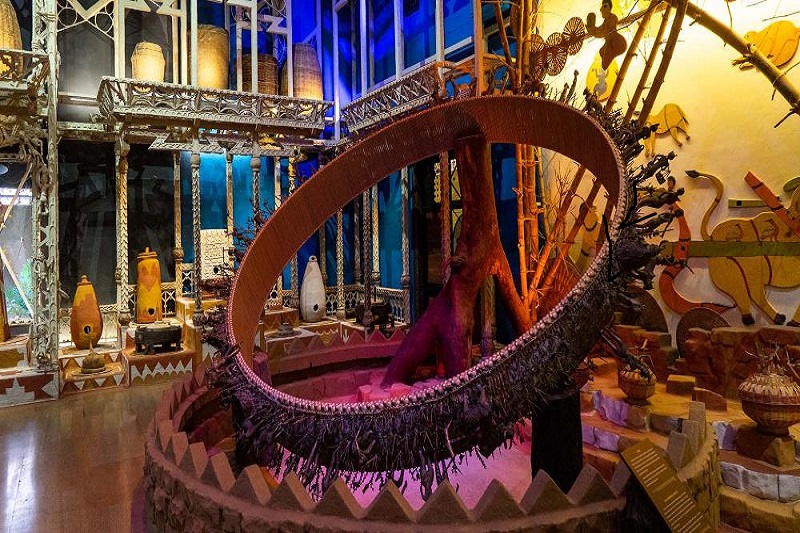Tribal Museum Bhopal
Bhopal
Tribal Museum Bhopal
Bhopal
At the epic, ‘Janjaatiya Sanghralaya’ or Tribal Museum located in Bhopal, the world of indigenous tribes is depicted with much authentic skill and finesse.
An amalgamation of anthropological provenance and sociological relevance of different cultures, customs and rituals of indigenous peoples such as the Gonds, Bharias, Korku, Sahariya, Bhil, Baiga and Kol– the museum is a rich repository of traditional aesthetics and artworks.
Sculpted and styled by artists and craftsmen, hailing from remote corners of the state like Jhabua, Dindori, Alirajpur and other districts, the museum is nothing short of a ‘communication tool’ disseminating beliefs and traditions of the indigenous people.
The ‘Hamlet’: A gallery of homes
Showcasing homes of tribes – Gond, Korku, Bhil, Saharaiya etc, this section of the gallery retains the authenticity, and richness of adivasi tradition, while highlighting their dependence on natural resources. At the outset, houses have been made of mud, dung, hay, dry foliage, bamboo, and other grasses with a portrayal of essential supplements such as earthenware, charpoys, and agricultural tools used by tribal farmers.
Celebrating Cultural Diversity
The next section at the museum celebrates the different traditions associated with weddings, and festivals of these communities. The sanctity and sacredness attached to natural resources – forests, flowers, leaves and farms with sculptures of men and women have been brought to life by artists. Significance of a ‘vivah mandap’ at the centre, musical instruments like Dholak and Damru hanging from the revered banyan, and relevance of other rituals, have been told colorfully. (See pictures). Additionally, the mythical relevance of bamboo originating from the story of ‘Baasin Kanya’ is told with much fervor and beauty, highlighting the social, traditional and economic importance of forest resources such as bamboo in shaping rural livelihoods.
‘Devlok’ or the house of gods is one of the most fascinating portions of the gallery. The entire spectrum of different myths and beliefs associated with customs of worshipping mother earth, mountains, rivers, etc. have been recreated. A huge banyan tree at one corner, different kinds of terracotta artefacts painted with white and red are realistic creations, here at the Devlok.
Chattisgarh, is featured as the guest state here at the museum. Celebrating indigenous cultures of natives of Bastar region, artists have put together a huge Dussera pavilion, with metal works from Bastar featuring different community traditions prevalent in the state. The ancient educational system of ‘Ghotul’, along with the story and evolution of pottery as an art with its contemporary relevance in Bastar, have been showcased.
Generating Knowledge Capital
The occasion of ‘International Day of the World’s Indigenous Peoples’ is celebrated annually (August 9th) at the museum thus highlighting the museum’s objective of preserving heritage and generating awareness about indigenous tribes of the state. Towards this mission, the state department of culture organizes painting and folk-art exhibitions, music and dance exhibitions/concerts, lectures, pottery and crafts workshops at the museum, thus recognizing hidden talents of artists and craftsmen by encouraging them to participate in these events from time to time. Additionally, the department of culture encourages artists from several parts of the state to train urban youth, women and children, and to simultaneously showcase their indigenous talents.
Tickets Details of Tribal Museum:
Indian Citizen - Rs.20/- Per Person (10 Years Or Older)
Foreign Citizen - Rs.400/- Per Person (10 Years Or Older)
Photography - Prohibited For Now
Timings of Tribal Museum:
12:00 Noon To 07:00 Pm from November to February and
12:00 Noon To 08:00 Pm March to October every year
Closed - Monday and all National Holidays
Note: Source of Date and Time is Internet, Kindly crosscheck/reconfirm before finalizing the Tour Plan. (https://mptribalmuseum.com/contact)
